Intro
Propranolol is a medication that belongs to a class of drugs known as beta blockers. Beta blockers are designed to block the effects of the hormone epinephrine, also known as adrenaline, and to slow the heart rate and reduce its workload. Propranolol is one of the most commonly prescribed beta blockers and has a wide range of uses. In this article, we will explore the various uses of propranolol, its benefits, and its potential side effects.
Propranolol has been used for decades to treat a variety of medical conditions, including high blood pressure, angina, and certain heart rhythm disorders. It works by blocking the action of certain natural chemicals in the body, such as epinephrine, which can increase heart rate and blood pressure. By blocking these chemicals, propranolol helps to slow the heart rate and reduce the force of the heart's contractions, which can help to lower blood pressure and reduce the risk of heart problems.
Propranolol is also used to treat other conditions, such as migraines, tremors, and anxiety disorders. It has been shown to be effective in reducing the frequency and severity of migraines, and it is often used to treat performance anxiety, such as stage fright. Additionally, propranolol has been used to treat certain medical conditions, such as thyrotoxicosis, which is a condition caused by an overactive thyroid gland.
What is Propranolol Used For?
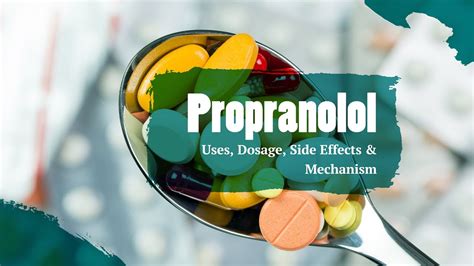
Propranolol is used to treat a variety of medical conditions, including high blood pressure, angina, and certain heart rhythm disorders. It is also used to treat migraines, tremors, and anxiety disorders. In addition to these uses, propranolol has been shown to be effective in reducing the risk of heart problems, such as heart attacks and strokes, in people with high blood pressure or other heart conditions.
Benefits of Propranolol
The benefits of propranolol are numerous. It has been shown to be effective in reducing blood pressure, heart rate, and the risk of heart problems. It is also effective in reducing the frequency and severity of migraines, and it has been used to treat performance anxiety and other anxiety disorders. Additionally, propranolol has been shown to be effective in reducing the risk of death from heart-related causes in people with high blood pressure or other heart conditions.How Does Propranolol Work?

Propranolol works by blocking the action of certain natural chemicals in the body, such as epinephrine, which can increase heart rate and blood pressure. By blocking these chemicals, propranolol helps to slow the heart rate and reduce the force of the heart's contractions, which can help to lower blood pressure and reduce the risk of heart problems. Propranolol also works by reducing the amount of blood that is pumped out of the heart with each beat, which can help to reduce the workload on the heart and reduce the risk of heart problems.
Side Effects of Propranolol
Like all medications, propranolol can cause side effects. Some common side effects of propranolol include dizziness, lightheadedness, and nausea. Other side effects can include fatigue, insomnia, and vivid dreams. In rare cases, propranolol can cause more serious side effects, such as shortness of breath, swelling of the feet and ankles, and chest pain.Propranolol Dosage and Administration
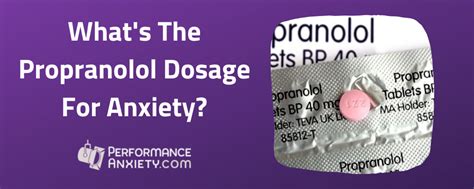
The dosage and administration of propranolol can vary depending on the condition being treated and the individual patient. Propranolol is typically taken orally, and the dosage can range from 20 to 640 milligrams per day. It is usually taken in divided doses, and the dosage can be adjusted based on the patient's response to the medication.
Precautions and Warnings
Propranolol can interact with other medications, such as certain antidepressants and blood thinners. It can also worsen certain medical conditions, such as asthma and diabetes. Patients who are taking propranolol should be monitored closely for any changes in their condition, and they should report any side effects or concerns to their doctor.Propranolol and Pregnancy
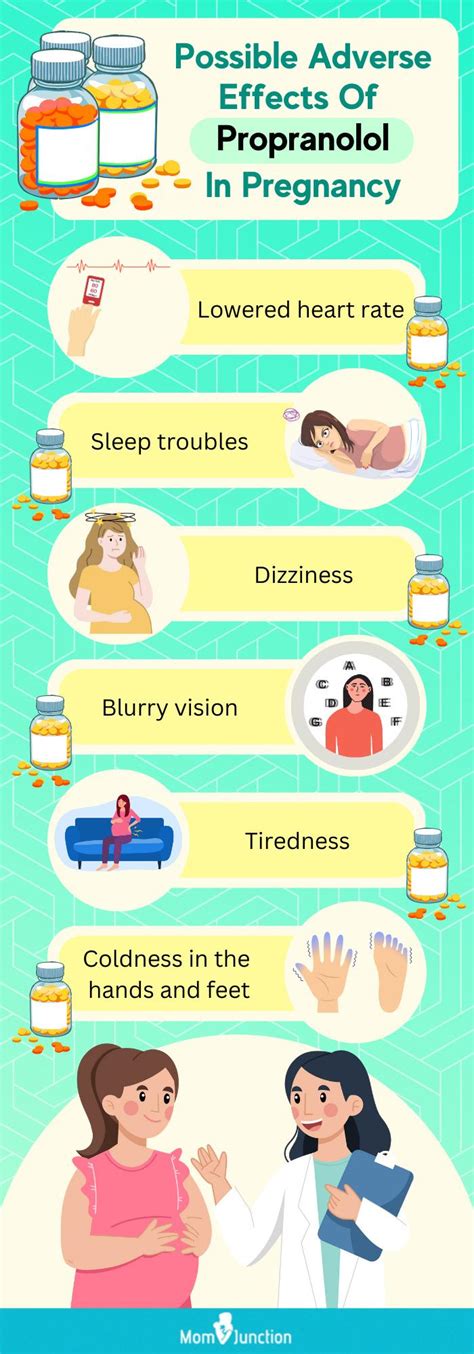
Propranolol can be used during pregnancy, but it should be used with caution. Propranolol can cross the placenta and affect the fetus, and it can also cause changes in the mother's blood pressure and heart rate. Women who are pregnant or breastfeeding should consult with their doctor before taking propranolol.
Propranolol and Breastfeeding
Propranolol can pass into breast milk, and it can affect the baby. Women who are breastfeeding should consult with their doctor before taking propranolol, and they should monitor their baby for any changes in behavior or condition.Propranolol and Children
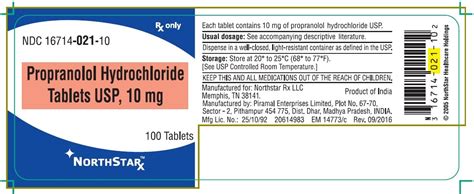
Propranolol can be used in children, but it should be used with caution. Propranolol can affect the child's growth and development, and it can also cause changes in the child's behavior and mood. Children who are taking propranolol should be monitored closely for any changes in their condition, and they should report any side effects or concerns to their doctor.
Propranolol and Older Adults
Propranolol can be used in older adults, but it should be used with caution. Propranolol can affect the older adult's blood pressure and heart rate, and it can also worsen certain medical conditions, such as dementia and Alzheimer's disease. Older adults who are taking propranolol should be monitored closely for any changes in their condition, and they should report any side effects or concerns to their doctor.Propranolol Interactions
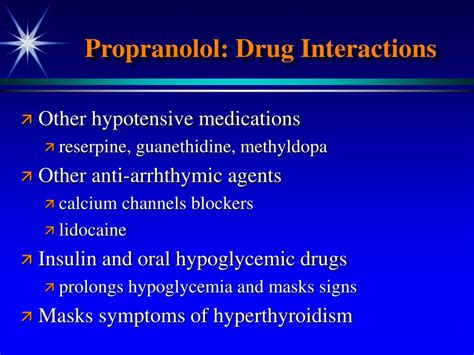
Propranolol can interact with other medications, such as certain antidepressants and blood thinners. It can also interact with certain foods and drinks, such as grapefruit and grapefruit juice. Patients who are taking propranolol should be aware of these interactions and should consult with their doctor before taking any new medications or consuming certain foods and drinks.
Propranolol and Other Medications
Propranolol can interact with other medications, such as certain antidepressants and blood thinners. It can also interact with certain medications, such as beta blockers and calcium channel blockers. Patients who are taking propranolol should be aware of these interactions and should consult with their doctor before taking any new medications.Propranolol Overdose
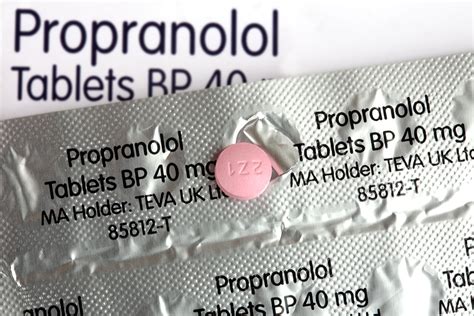
Propranolol overdose can occur if the patient takes too much of the medication. Symptoms of propranolol overdose can include dizziness, lightheadedness, and nausea. In severe cases, propranolol overdose can cause more serious symptoms, such as shortness of breath, swelling of the feet and ankles, and chest pain. Patients who suspect they have taken too much propranolol should seek medical attention immediately.
Propranolol Withdrawal
Propranolol withdrawal can occur if the patient stops taking the medication suddenly. Symptoms of propranolol withdrawal can include dizziness, lightheadedness, and nausea. In severe cases, propranolol withdrawal can cause more serious symptoms, such as shortness of breath, swelling of the feet and ankles, and chest pain. Patients who are taking propranolol should not stop taking the medication suddenly and should consult with their doctor before stopping the medication.What is propranolol used for?
+Propranolol is used to treat a variety of medical conditions, including high blood pressure, angina, and certain heart rhythm disorders. It is also used to treat migraines, tremors, and anxiety disorders.
How does propranolol work?
+Propranolol works by blocking the action of certain natural chemicals in the body, such as epinephrine, which can increase heart rate and blood pressure. By blocking these chemicals, propranolol helps to slow the heart rate and reduce the force of the heart's contractions, which can help to lower blood pressure and reduce the risk of heart problems.
What are the side effects of propranolol?
+Common side effects of propranolol include dizziness, lightheadedness, and nausea. Other side effects can include fatigue, insomnia, and vivid dreams. In rare cases, propranolol can cause more serious side effects, such as shortness of breath, swelling of the feet and ankles, and chest pain.
In summary, propranolol is a medication that belongs to a class of drugs known as beta blockers. It is used to treat a variety of medical conditions, including high blood pressure, angina, and certain heart rhythm disorders. Propranolol works by blocking the action of certain natural chemicals in the body, such as epinephrine, which can increase heart rate and blood pressure. While propranolol can be effective in treating these conditions, it can also cause side effects, such as dizziness, lightheadedness, and nausea. Patients who are taking propranolol should be aware of these side effects and should consult with their doctor before taking any new medications or consuming certain foods and drinks. If you have any questions or concerns about propranolol, please leave a comment below or share this article with others who may be interested.
